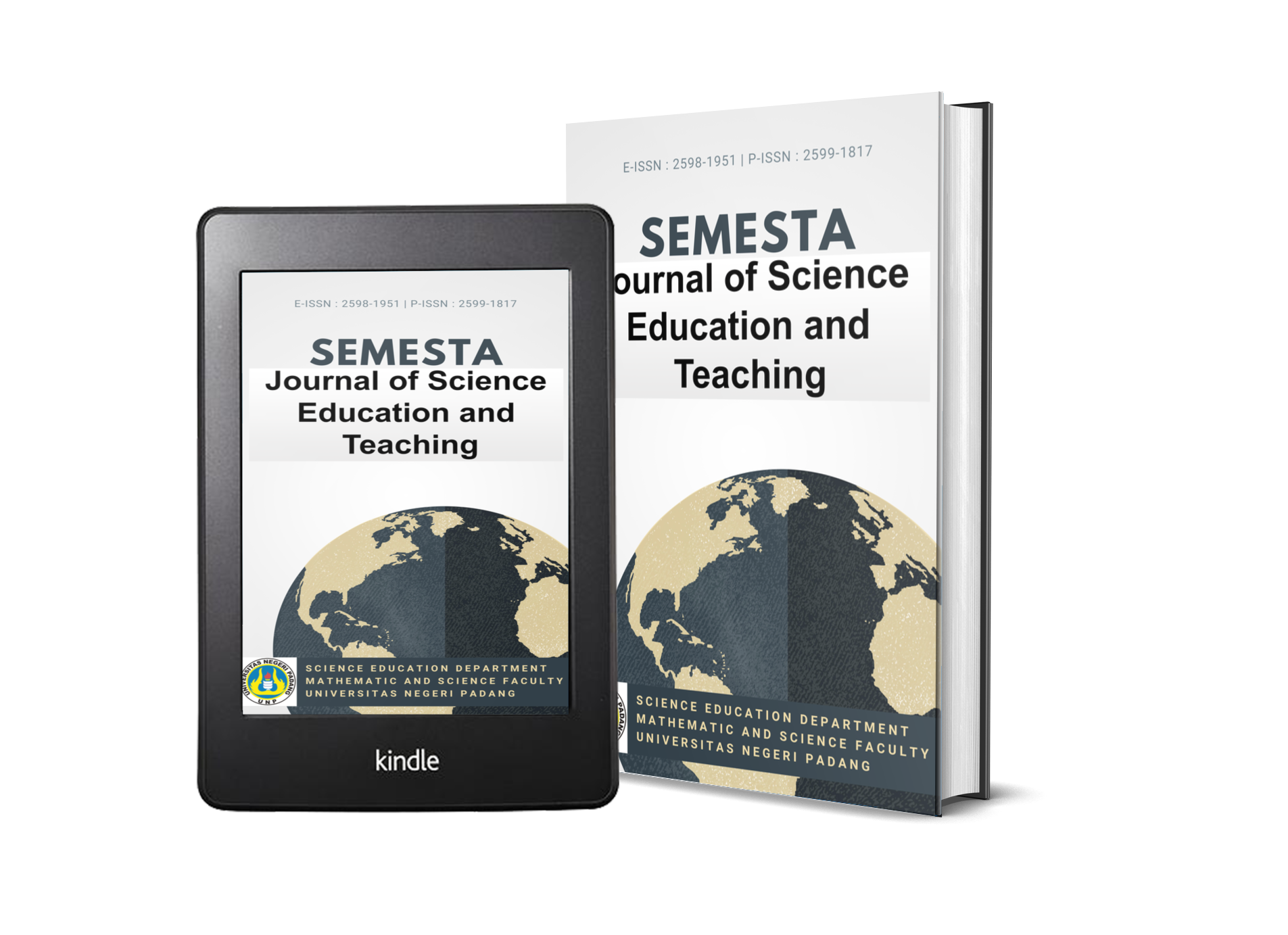DEVELOPMENT OF WEISMANN GAME ON THE CONCEPT OF BREEDING SYSTEMS IN PLANTS AND ANIMALS AS A MEDIA FOR INDEPENDENT EVALUATION OF JUNIOR HIGH SCHOOL STUDENT
DOI:
https://doi.org/10.24036/semesta/vol4-iss2/157Kata Kunci:
Educational game, evaluation, science learningAbstrak
The intend of this study is to develop a valid and practical educational game. Expected this game can give rise to create a pleasurable atmosphere in the evaluation process of the concept of the breeding system in plants and animals in grade 9. The game is named “Weismann”, derived from the name of the scientist who originated the germplasm theory, August Friedrich Leopold Weismann. This research belongs to the type of Research and Development. The instruments used in this study were interview questionnaires, validation questionnaires, and practicality questionnaires. The data source came from the results of interviews with science teachers and students, the results of products assessments by experts, as well as the practicality test scores for the use of games by teachers and junior high school students. Based on study, two results could be stated. First, the educational game “Weismann” is in the very valid category with a value of 91.2. Second, the use of the “Weismann” educational game according to teachers and students is in the very practical category with values of 95.0 and 83.7, respectively. It could be inferenced that the educational game “Weismann” based on Google Sites, the concept of the breeding system of plants and animals in grade 9 is valid and practically to used in science learning.






